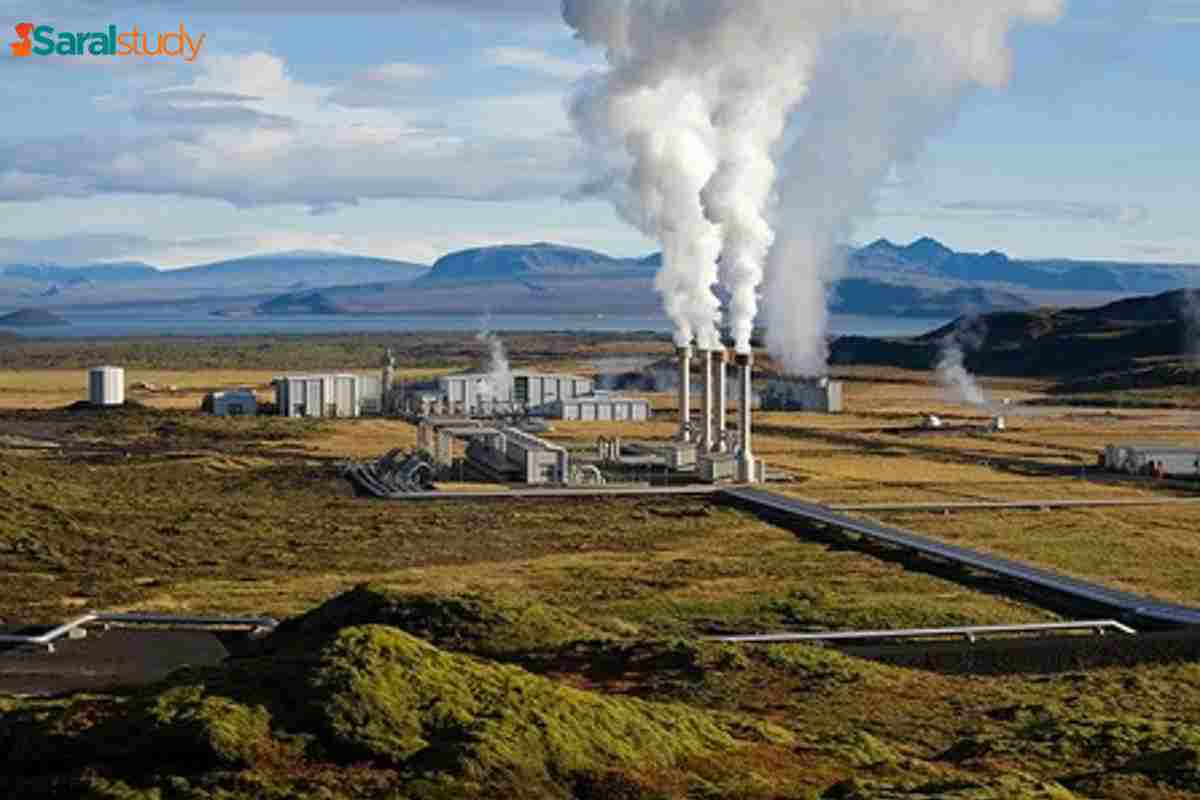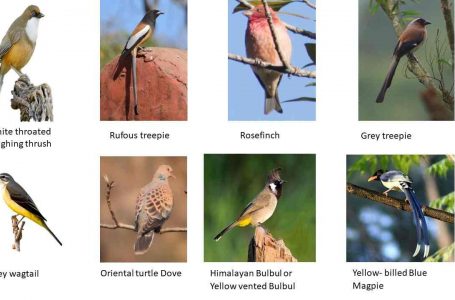Types of Pollution and Its Effects

Table of Contents
What is Pollution?
The definition of pollution is complex to define yet is easy to see at the same time. In distinction to it, pollution is the process of making land, water, air, or other parts of the environment not safe or suitable to use. This is due to the contaminant present in a natural environment. Things such as light, sound, and temperature can also be considered pollutants when introduced artificially into an environment.
Moreover, pollution is present in all forms around the world which is a threat to the health of the planet earth and the life forms that are settled in it. According to a report, children are most at risk due to pollution as it impacts the health and wellbeing of a child. Due to which there can be a rapid increase in non-communicable diseases among children e.g. cancer, diabetes, asthma, birth defects, etc.
Types of Pollution
There can be different types of pollution in our surroundings but the three major types of pollution are water, air, and land pollution.
1. Water Pollution
Water pollution is the release of substances into groundwater, lakes, sea, and oceans which makes it unsafe for drinking, swimming, washing, etc. People who drink polluted water are exposed to perilous chemicals that may make them sick. Around 4,000 children die every day due to drinking dirty water. Sometimes, these polluted waters can harm people indirectly. As the fish that live in polluted water is unsafe to eat which can make one sick. Because they have too many pollutants in their flesh. There are many sources of water pollution and some of them are given below:
- Oil and natural gas, which can leak into oceans and lakes from natural underground sources are known as petroleum seeps which causes water pollution. The Coal Oil Point Seep is the world’s largest petroleum seep. It affects marine plant and animal life.
- Another source of water pollution is Oil spills. The Deepwater Horizon oil rig detonated in the Gulf of Mexico, in April 2010 causing oil to burst from the ocean floor is an example of oil spills. In the following months of the same year, hundreds of millions of gallons of oil spewed into the gulf waters resulting in the killing of swamp plants and aquatic organisms such as crabs and fish.
- The most common source of water pollution is Sewage. Around the world, many cities have a poor facility of sewage systems and sewage treatment plants. For instance, Delhi, the capital of India, is home to more than 21 million people, and the waste produced within the city is dumped in the Yamuna River. This makes it dangerous to use as a source of water for drinking, washing, and hygienic purposes.
- One of the major sources of water pollution is the fertilizer which is used in agriculture. As it contains large amounts of the element’s nitrogen and phosphorus, which help plants to grow. Rainwater washes fertilizer into streams and lakes which makes water polluted.
- Garbage is also one of the sources of water pollution. As many plastics such as bottles, caps, bags are seen floating in the river. Which are carried through the Ocean to certain places on the globe. The Great Pacific Garbage Patch is one of the largest garbage patches in the ocean which is the size of Texas.
2. Air Pollution
Air pollution is one of the foremost types of pollution. As air pollutants persevere in the atmosphere and are carried long distances by winds. Air pollution surpasses local, regional, and international boundaries. This affects the global climate and air, which consists mostly of 78% nitrogen, 21% oxygen, and the remaining 1% is inert gases. But now it is under the constant attack of various harmful gases which are released through industries and automobiles.
More than 2 million people die each year due to air pollution only. As it affects the respiratory organ. Due to which there is a rapid increase in asthma cases and other respiratory diseases. Depending on the pollutant present in the atmosphere, human health can vary widely. The effects on health can be extensive and severe if the pollutant present in the atmosphere is highly toxic.
For example, over 2,000 people were killed in the Bhopal gas tragedy in 1984 and 200,000 suffered respiratory problems. Its effect can be seen to date.
3. Land Pollution
All around the world waste materials like household garbage and industrial waste are deposited on Land. According to a report Urban India right now produces 62 million tons of waste and is further assumed that in 2030 it will reach 165 million tons. Commercial or industrial waste is an important share of solid waste. Wastes are classified into two parts hazardous and non-hazardous. Materials that come under Non-hazardous are construction material, medical waste (like bandages, surgical gloves, surgical instruments, discarded needles, etc.). Hazardous waste is any liquid, solid, or slops waste that contains properties that are dangerous to human health and the environment. These hazardous wastes are generated from mining, petroleum refining, pesticide manufacturing, and other chemical production. Hazardous wastes are generated from households as well, including paints and solvents, motor oil, fluorescent lights, aerosol cans, and ammunition.
Some other types of Pollutions
4. Noise Pollution
Albeit humans can’t see or smell noise pollution, but it still affects the environment. The main sources of noise pollution are mostly Industries, Vehicles, Constructions, Planes, etc. Noise can be more than an annoyance. At a certain point in time, it can cause physical damages in the eardrum which can result in temporary or permanent hearing loss. According to a report in addition to causing hearing loss, it also raises blood pressure, pulse rates, causes irritability, anxiety, and mental fatigue.
Underwater noise pollution is also one of the forms of noise pollution as it affects aquatic life. Like the sound coming from ships can disrupt the navigation system of whales, dolphins, and other species as well as marine.
5. Light Pollution
An undesirable or unnecessary artificial light which is a form of waste energy can cause an adverse effect and degrade the quality of the environment. Although light pollution may not appear harmful for public health, it is an environmental quality affair of no small importance. It harms birds, other animals, and astronauts, etc.
Light pollution is assessed as one of the contributing factors in the affected decline of certain migratory birds’ population over the past several decades. Even lights from an impartially small town with a population of mere 3,000 people can cause significant night sky degradation for an observer.
6. Indoor Air Pollution
The air present inside our house can also be polluted. As air and carpet cleaners, insect sprays, and cigarettes are all sources of indoor air pollution.
Effects of Pollution
The pollution effects can be seen every day, around us on water, air-land, and other forms.
1. Effects of Air Pollution
- An increased risk of heart attack, wheezing, coughing, breathing problems, and irritation of the eyes, nose, and throat are all the causes of high levels of air pollution.
- It can also cause worsening of current heart problems, asthma, and other lung complexities.
- Due to air pollution animals also suffer from numerous health problems like humans such as birth defects, reproductive failure, and diseases.
- The chief cause of acid rain is air pollution. The formation of acid rain is due to the nitrogen oxide and sulfur dioxide which are released by industries. It makes soil and water bodies acidic and damages trees, monuments, etc. By the burning of fossil fuels, nitrogen oxides are released into the air which is responsible for toxic algae blooms.
- The depletion of the ozone layer is also the effect of air pollution. As the release of man-made compounds including hydrochlorofluorocarbons, chlorofluorocarbons, and halons formerly used as coolants, foaming agents, pesticides, solvents, aerosol propellants, and fire-extinguishers are depleting the ozone. Because of which harmful ultraviolet rays are entering the surface of the earth and giving rise to Global Warming.
2. Effects of Water Pollution
- Water pollution effects depend on which chemicals are being dumped whereas it is a serious threat to humans, animals, and aquatic life.
- By dumping garbage and chemicals, water bodies that are near metro areas tend to be heavily polluted, both legally and illegally.
- The death of aquatic creatures by far is the biggest outcome of water pollution. Due to the aquatic creature, human beings are also being affected by it directly or indirectly. Through this polluted water, only many infectious diseases like typhoid, jaundice, cholera, dysentery, and malaria are now common. It also causes algal bloom in a lake; the generation of newly introduced nutrients encourages the growth of plants and algae which in return reduces the level of oxygen in the water.
- Acidification of the ocean is making shellfish and corals difficult to survive. As they absorb carbon pollution which is created each year due to the burning of fossil fuels, oceans are becoming acidic day by day.
3. Effects of Land Pollution
- Land pollution has substantial consequences for humans, animals, microorganisms, and aquatic life. Contaminated land can cause various problems on the skin, respiratory problems, and even different kinds of cancers.
- These toxic substances come into touch with the human body directly by eating fruits and vegetables that have been produced in polluted soils, being consumed through drinking water that has been contaminated, direct contact with the skin, and breathing in air polluted with particles and dust.
- Deforestation is the most important concern when it comes to land degradation and soil erosion. Clear cutting of vegetation and tree cover creates severe conditions that devastate ecosystems and habitats.
- Deforestation also creates an imbalance in atmospheric conditions, reducing the amount of carbon that is naturally taken out of the atmosphere. This is a severe problem acknowledging that most pollution generated by people is carbon-based.
4. Effects of Noise & Light Pollution
- Noise pollution can cause stress, hearing loss, headaches, irritation, and sleep loss resulting in decreased productivity.
- Oil drills, submarines, and other vessels on and in the ocean can cause unnecessary noise that has resulted in the damage or death of marine animals, particularly whales.
- Too much light causes eye strain and anxiety, harming our eyes and reducing our quality of life. Light pollution also causes a reduction in the hormone melatonin that helps us to fall asleep, resulting in restlessness and exhaustion.
- Many birds, mammals, insects, and reptiles are photoperiodic meaning their movement, mating, growth and development, and eating cycles are controlled by natural light patterns. Light pollution can prevent these natural ways and cycles, causing a decrease in wildlife populations.
How to Control Pollution
Pollution prevention is major global attention because of its devastating effects on people’s health and the environment. As we are all inhabitants on Earth. So everyone is a stakeholder, and every person has something to contribute to advance effective pollution prevention and awareness. Environmental protection is a natural extension of caring for ourselves, loving our children, and securing a sustainable future for generations to come.
Every action or inaction of any person affects the environment—be it good, neutral, or negative. By becoming aware and doing the right thing, we want to be part of the solution. Some things that you can do mention below:
- Use Eco-Friendly Transportation.
- Drive an electric or hybrid car, or at least prefer one that uses unleaded gasoline.
- Keep your car in good running condition to avoid discharges.
- Share a ride or carpool.
- If possible, choose to walk or ride a bicycle whenever.
- Dispose of Waste Responsibly
- Never use open fires to dispose of waste, mainly chemicals, and plastic.
- Adopt the 3 R’s of solid waste management that are reduced, reuse, and recycle.
- Use sustainable, enhanced, or recycled building materials.
- Start composting leaves and clippings from your yard and food scraps from your kitchen to decrease waste while improving your soil.
- Take care to well dispose of your pet’s waste.
- Adopt Renewable Sources of Energy
- Utilize the power supplied abundantly and freely by wind and sun. Hang your laundry to dry to reduce your use of gas or electricity, and open a window or put on a sweater rather than switching on the air conditioner or heater.
- Examine investing in solar panels or other renewable energy sources for your home or business.
- Support Conservation as a Consumer
- Purchase local foods and goods. In this method, the use of fuel for transporting goods can be reduced.
- See around your house or place of business for means you could conserve water.
- Use and purchase products that are eco-friendly or made with biodegradable materials.
- Avoid plastic.
- Always carry a bag when you shop.
- Avoid Disrupting the Ecosystem.
- Plant more trees. More number of trees means clean air, more oxygen, and beautiful surroundings.
- Say a big “NO” to pesticides and GMOs (genetically modified organisms).
How long some garbage Last?
Different materials decompose at different rates. How long does it take for these common types of trash to break down?
| Paper | 2-4 weeks |
| Tin can | 100 years |
| Plastic Bottle | 450 years |
| Glass Bottle | 500 years |
| Styrofoam | Never |
| Orange Peel | 6 months |
| Milk Carton | 5 years |
| Plastic Bag | 15 years |
Universal bodies who are trying to control the pollution
Around the world, people and governments are making efforts to resist pollution. Recycling, for instance, is becoming more prevalent. In recycling, waste is processed so its useful materials can be used again. Aluminum, Glass, cans, and various types of plastic can be melted and reused. Paper can be broken down and converted into a new paper. There are the highest recycling rates in Australia and Switzerland. These nations recycle between 50 and 60 percent of their waste. The United States recycles about 30 percent of its waste.
Governments can resist pollution by passing laws that limit the amount and types of chemicals factories and agribusinesses are permitted to use. The smoke formed due to coal-burning power plants can be filtered. People and businesses that illegally dump pollutants into the water, land, and air can be penalized for millions of dollars. Some government programs, such as the Superfund program in the United States can impose polluters to clean up the sites they polluted. Different actions taken by governments and organizations are given below.
- International agreements can also reduce pollution. The Kyoto Protocol, a United Nations agreement to limit the eruption of greenhouse gases has been signed by 191 countries. This law limited what pollutants could be released into the water and set measures for how clean water should be. Today, the Cuyahoga River is much cleaner. Fish have returned to regions of the river where they once could not persevere. But even as some rivers are becoming cleaner and others are becoming more polluted. Countries with growing economies normally need more power plants, which produce more pollutants.
- International Environmental Law (IEL) is regarded as an attempt to control pollution and the reduction of natural resources within the framework of sustainable development. It is a branch of public international law – a body of law formed by states for states to govern problems that arise between states.
- The Clean Air Campaign is a not-for-profit organization. Under this organization, the Georgians take steps to improve the quality of the air and reduce traffic congestion. The organization was established in 1996 by the government, business, environmental, civic, health, and educational organizations to address traffic congestion and air quality concerns in the metro Atlanta region.
- An international organization, the International Union for Conservation of Nature is serving in the field of nature conservation and sustainable usage of natural resources. It is required in data collection and analysis, research, advocacy, field projects, and education. IUCN’s mission is to encourage, influence, and aid societies throughout the world to conserve nature and to ensure that any usage of natural resources is equitable and ecologically sustainable.
- United Nations Water (UN-Water) is an interagency mechanism that organizes the efforts of United Nations entities and organizations working on water and sanitation issues. There are over 30 UN organizations that give out water and sanitation programs, considering the point that water problems run in all of the UN’s main focus areas. UN-Water’s role is to organize so that the UN family ‘delivers as one’ in acknowledgment of water-related challenges. India’s role in pollution control.
India’s Role in Pollution Control
In India, all pollution control measures are based on the three major acts: The Water act (1974), The Air act (1981), and The Environment Protection Act (1986). Recently the pollution limits of industries have been bound, decades-old and outdated norms have been updated. Still, there are gaps in matching global best practice and control measures. For instance, Orange and Green category industries are not rigorously observed as the Red category industries. Pollution control actions and solutions are not based on technological advancement.
- The authorized organization, CPCB (The Central Pollution Control Board), was established under the Water (Prevention and Control of Pollution) Act, in September 1974. Moreover, CPCB was trusted with the powers and functions under the Air (Prevention and Control of Pollution) Act, 1981. It helps as area development and also gives technical services to the Ministry of Environment. And Forests of the provisions of the Environment (Protection) Act, in 1986. The basic purposes of the CPCB, as spelled out in the Water (Prevention and Control of Pollution) Act, in 1974. And the Air (Prevention and Control of Pollution) Act, in 1981.
- To encourage cleanliness of streams and wells in many areas of the States by prevention, control, and reduction of water pollution, and
- To enhance the quality of air and to prevent, control, or reduce air pollution in the country.
- The National Green Tribunal has been founded on 18 October 2010 under the National Green Tribunal Act 2010. For efficient and expeditious disposal of cases associating with environmental protection and conservation of forests and other natural resources including implementation of any legal right associating with the environment and providing relief and reimbursement for damages to property and persons and matters connected therewith or incidental thereto. It is a specialized body provided with the requisite expertise to manage environmental conflicts involving multi-disciplinary problems. The Tribunal shall not be bound by the procedure set down under the Code of Civil Procedure, 1908, but shall be conducted by principles of natural justice. New Delhi is the Principal Place of Sitting of the Tribunal and Kolkata, Bhopal, Pune, and Chennai shall be the other four areas of sitting of the Tribunal.
Conclusion
Pollution impact is not something any individual causes or can totally prevent or correct. So, to reduce pollution and its harmful effects we must hang together and should initiate in stopping people from litter. As even as individuals we are not impotent in the battle to preserve our environment.





